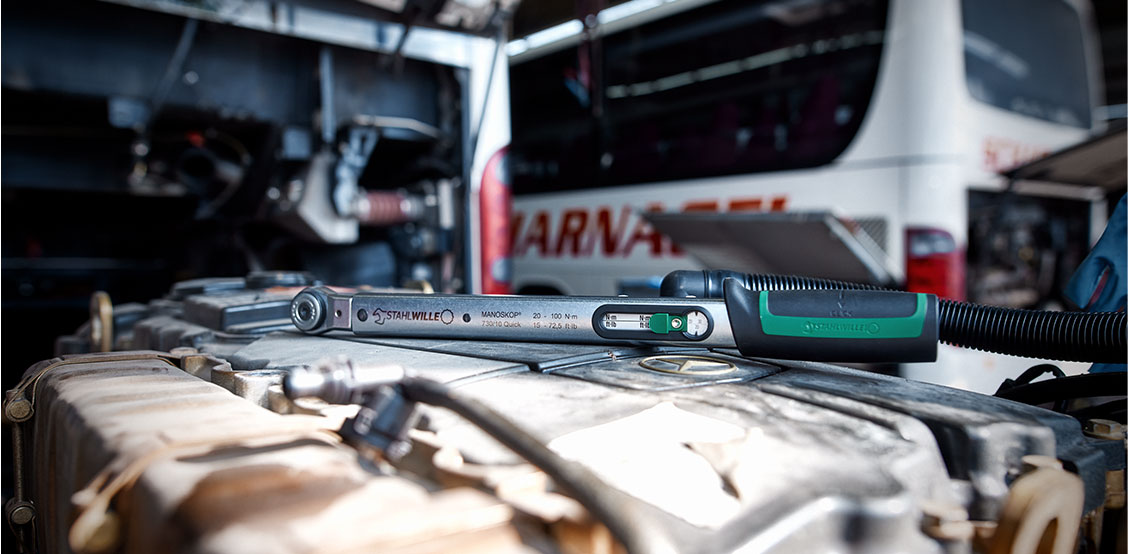More and more bolted joints require the use of a torque wrench. A complex precision tool is often used today for applications where a simple spanner used to be sufficient. This “tool change” also requires a rethink. We will explain here what you need to know about torque wrenches.
01.
Careful handling
Of course, you don't have to wrap your torque wrench in cotton wool. But it is not as robust as a spanner - after all, its interior contains sophisticated mechanics, and in modern versions even electronics. That’s why you should always handle it carefully: throw it, drop it, chuck it in the tool box or even use it as a replacement for the hammer - all this should be avoided to ensure that your tool can reliably measure the applied torque and trigger correctly. If your torque wrench comes with a case or tool box, it is best to transport it in this to ensure optimum protection.
02.
One click is all it takes!
“Don't overdo it.” Everyone knows the saying. But a bolted connection is not just defective if the bolt head is sheared off. If a tightening torque is specified, even a slight overrun can result in the connection not meeting the specification. This is why it is so important not to continue applying force after the wrench has triggered - i.e. after the first “click”. Note: Your reaction time after the trigger signal is key! The slower you react to the torque wrench signal, the more force you apply to the screw head unnecessarily. And you risk a poor connection.
03.
Observe the gripping position
It is essential that you hold the torque wrench in the correct position to measure the torque correctly. This is because the torque is calculated from the applied force and force loading point. The force loading point is the distance between your hand and the bolting position For this reason, many torque wrenches have a marking for the gripping position. With STAHLWILLE torque wrenches, the ergonomic shape of the handle also prevents incorrect operation. Some of our electronic torque wrenches even have force loading point compensation. This means that the torque wrench automatically corrects minor deviations!
So much for the handling! Here’s what to consider when adjusting torque wrenches: Correct setting of the torque wrench

